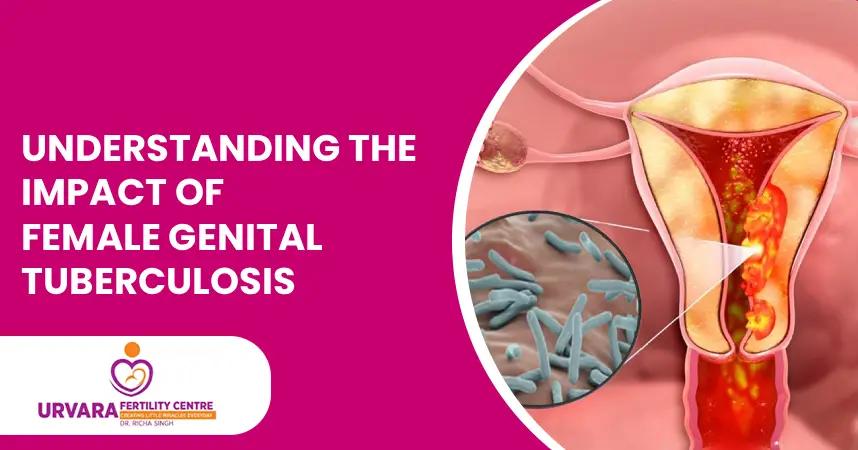
Understanding the Impact of Female Genital Tuberculosis
Female genital tuberculosis (FGTB) is a silent but serious disease that affects women’s reproductive organs, often leading to infertility and other health problems. Understanding the impact of FGTB is important for early detection, proper treatment, and prevention.
What Is Female Genital Tuberculosis?
Female genital tuberculosis is an infection caused by Mycobacterium tuberculosis bacteria, the same bacteria that cause regular tuberculosis (TB), but it targets the reproductive system of women. The disease usually spreads from the lungs or other infected parts through the blood or lymph nodes to the fallopian tubes, uterus, ovaries, and, less often, the cervix, vagina, or vulva.
How Does It Spread?
FGTB rarely starts as a primary infection in the genitals. It mostly spreads from a pre-existing TB infection, commonly from the lungs. The bacteria reach the genital organs by traveling through the bloodstream or lymphatics, or by direct spread from nearby organs like the intestines.
Who Is at Risk?
Women of reproductive age (15-45 years) are most commonly affected. However, FGTB can occur at any age, including postmenopausal women. It is more likely in places where general TB is common, such as in certain developing countries.
Symptoms of Female Genital Tuberculosis
FGTB is known as a “silent” disease because symptoms can be mild, vague, or even absent. Most women are diagnosed only when investigated for infertility. Common symptoms include:
-
Infertility: Almost 80-90% of women with FGTB face trouble getting pregnant.
-
Menstrual problems: Irregular periods, heavy bleeding, light periods, or absence of periods can happen.
-
Pelvic pain: Ongoing or recurring lower abdominal or pelvic pain affects many women.
-
Abnormal vaginal discharge: Thick, sometimes foul-smelling discharge may appear.
-
General symptoms: Some women experience low-grade fever, unexplained weight loss, and tiredness.
-
Other signs: Postmenopausal bleeding, pelvic or abdominal lumps, chronic pelvic inflammation, or symptoms that mimic other diseases like ovarian cysts or cancer.
Impact on Fertility
Infertility is the most severe and common impact of FGTB. The infection mostly damages the fallopian tubes (95-100% of cases), causing blockages, scarring, and adhesions, which make it difficult for the egg and sperm to meet. The uterus lining can also be damaged, resulting in poor implantation or repeated miscarriages. Even after completing treatment, the chances of becoming pregnant are lower, and risks of complications like ectopic pregnancy (pregnancy outside the uterus) are higher.
Diagnosis
Diagnosing FGTB is challenging, as it often resembles other gynecological problems. Diagnosis usually involves:
-
History and Examination: Doctors ask about TB history, symptoms, and perform a pelvic exam.
-
Laboratory Tests: Samples like endometrial tissue, menstrual blood, or fluids may be tested for TB bacteria.
-
Imaging and Endoscopy: Ultrasound, X-rays, MRI, or laparoscopy (keyhole surgery) can reveal organ damage.
Treatment
The main treatment is anti-tuberculosis therapy (ATT), which uses a combination of antibiotics for at least six months. Drug-resistant cases require other medications for a longer period. Surgery may be necessary in rare, advanced cases, especially when there are abscesses, severe scarring, or organ damage. Early and complete treatment usually removes the infection, but fertility may not always fully recover.
Prevention Strategies
Primary prevention involves controlling regular TB through vaccination, early diagnosis, and proper treatment to avoid its spread to the reproductive organs. Key strategies are:
-
BCG Vaccination: Widely given in high TB-burden countries to prevent severe forms of TB, although its effectiveness varies.
-
Safe Sexual Practices: Though rare, TB may be transmitted sexually, so using protection can lower the risk.
-
Treatment for TB Patients: Those with pulmonary TB must complete their treatment and maintain good hygiene to prevent spread.
-
Public Education: Awareness about symptoms and the importance of medical care helps with early diagnosis.
Social and Psychological Impact
Women diagnosed with FGTB often face social stigma, especially since it is linked to infertility and reproductive health. Emotional distress, anxiety, and even marital problems can occur. It is important to address both the medical and psychological needs of affected women.
Conclusion
Female genital tuberculosis is a hidden health challenge with a serious impact on women’s reproductive health, especially in regions where TB is common. Since it can be silent and easily mistaken for other problems, early diagnosis and complete treatment are vital. More awareness, regular health check-ups, and public education can help in timely detection and better outcomes for women everywhere.
Content Created By:

Cyberbizz Technologies
Team - Content Curator

